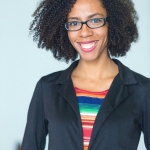
Aja Roberts
Cross-Generational Leadership: The Future of Effective Arts Leadership
Posted by Mar 16, 2016

Aja Roberts
It’s safe to say the arts leadership landscape is changing. Given the external societal changes such as late-career professionals postponing retirement, highly-educated millennials entering the workforce poised to make meaningful contributions, and a more culturally diverse group of emerging leaders, arts organizations must recognize the urgency of these challenges and determine what structural changes or model implementations they will make to reconcile these forces impacting leadership in the arts sector.
In Moving Arts Leadership Forward, it is important for organizations not to remain stagnant. They must understand the state of the arts sector and realize that change is both imminent and inevitable. Working in stagnation will stunt the growth of the arts administration ecosystem, particularly if early- and mid-career leaders are underutilized and arts organizations are left unable to serve their constituents to their full capacity. How will these emerging leaders be able to have real impact within their organizations with limited influence in the workplace?
Read More













